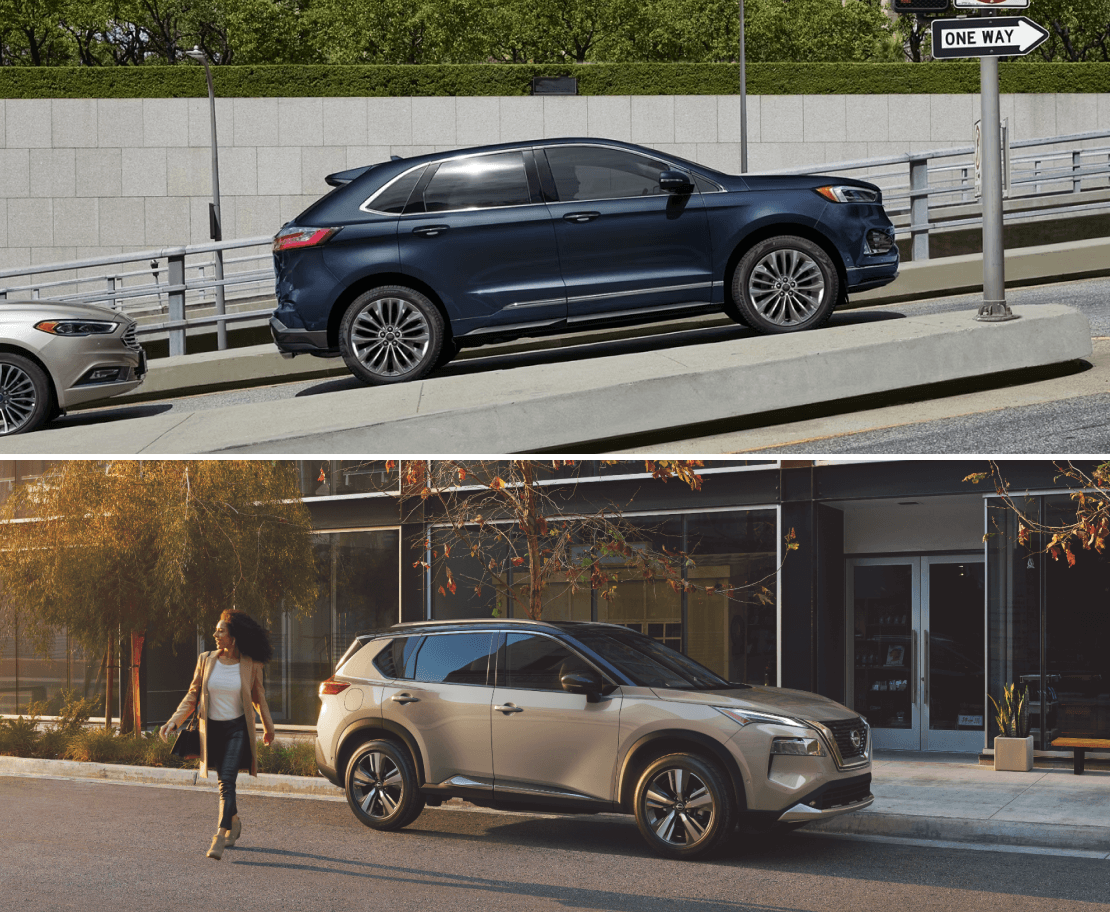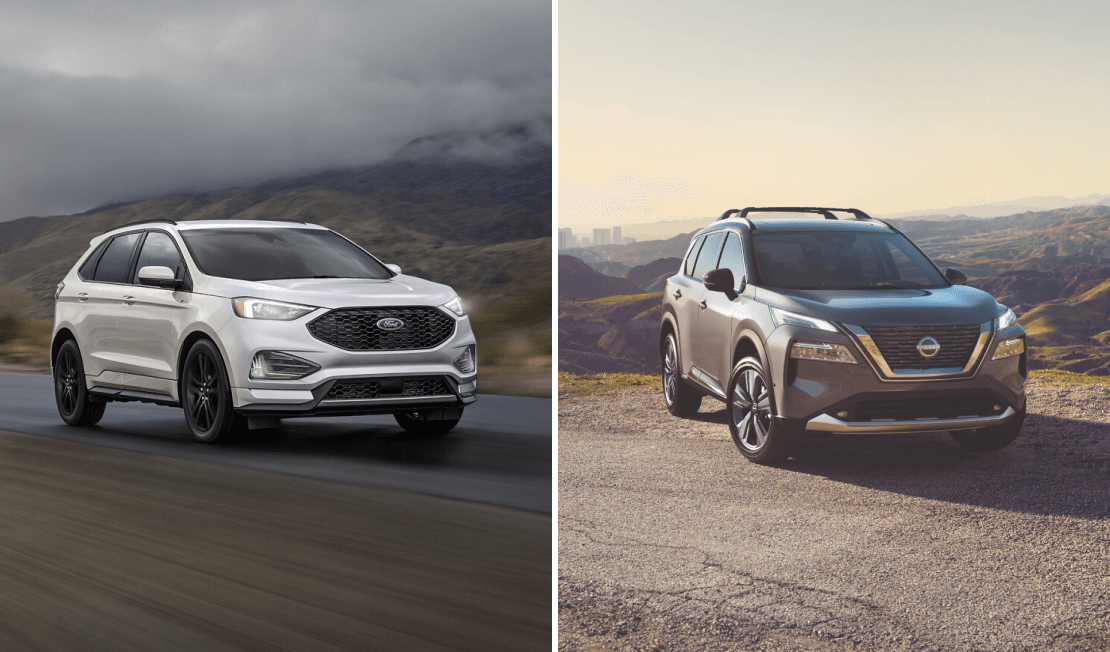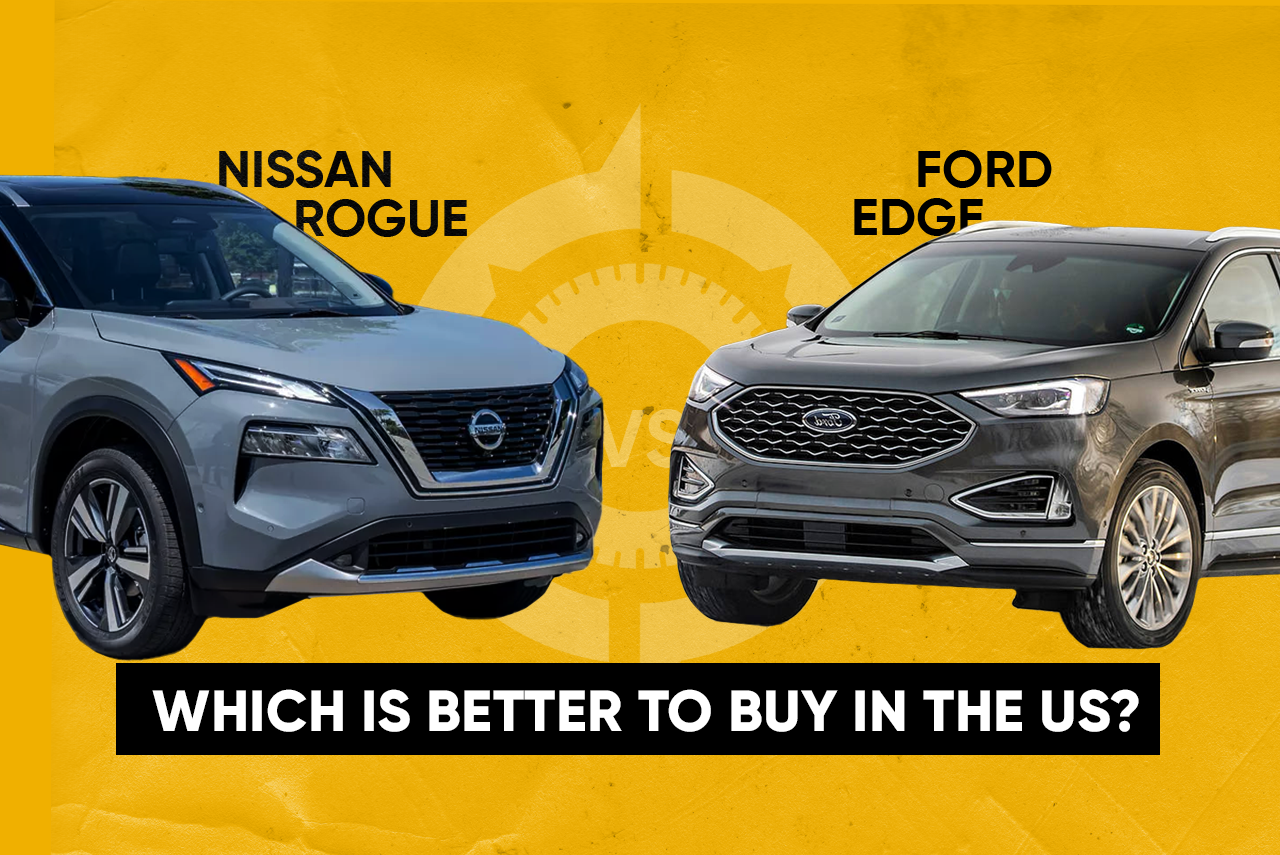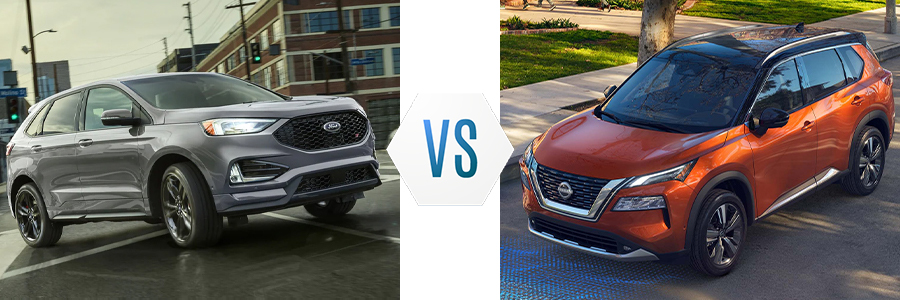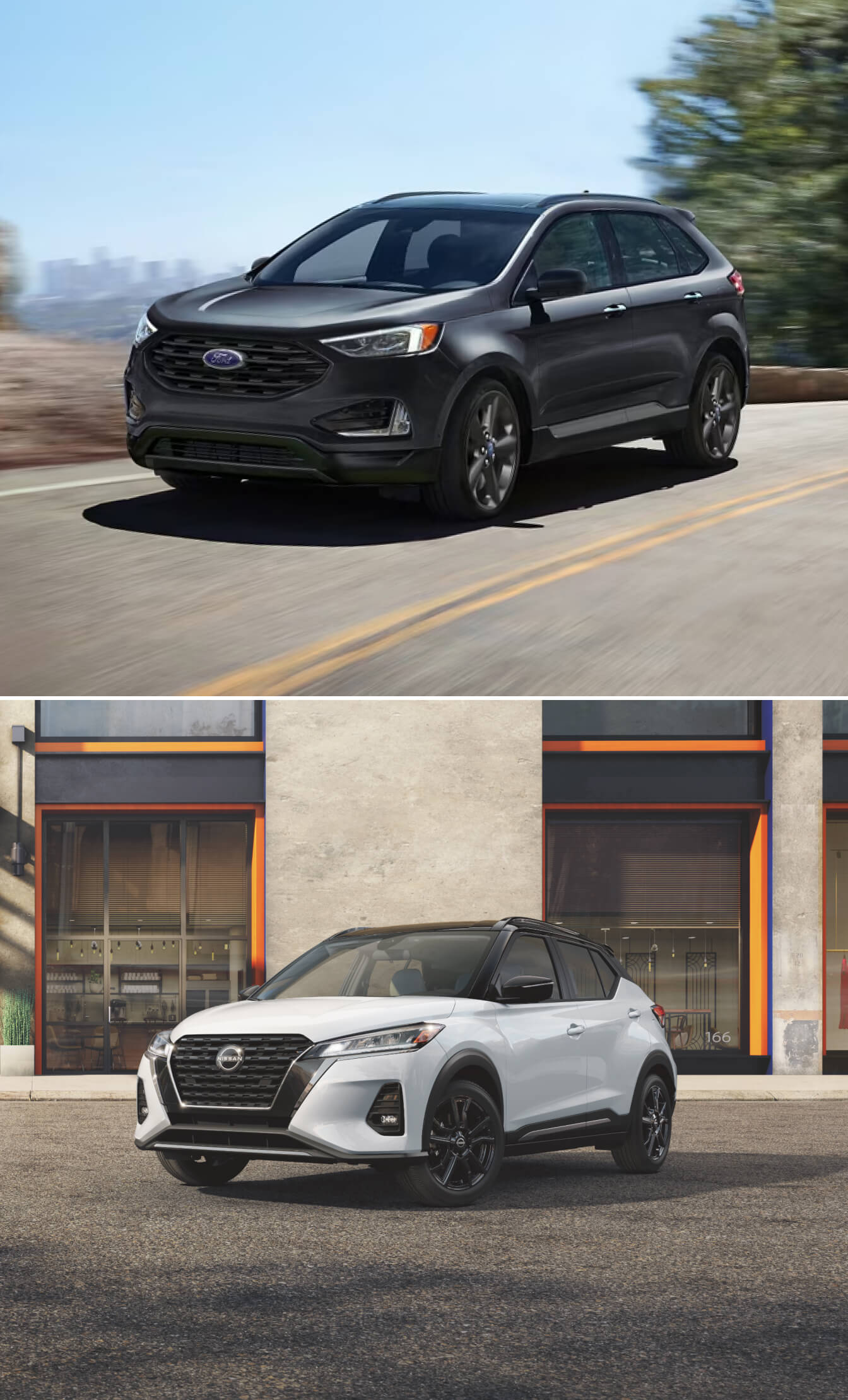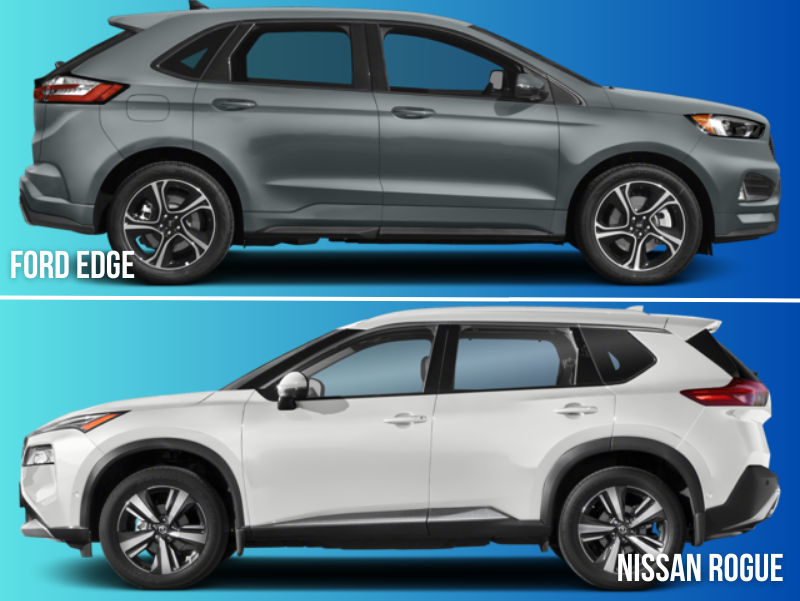Nissan Rogue Vs Ford Edge Size
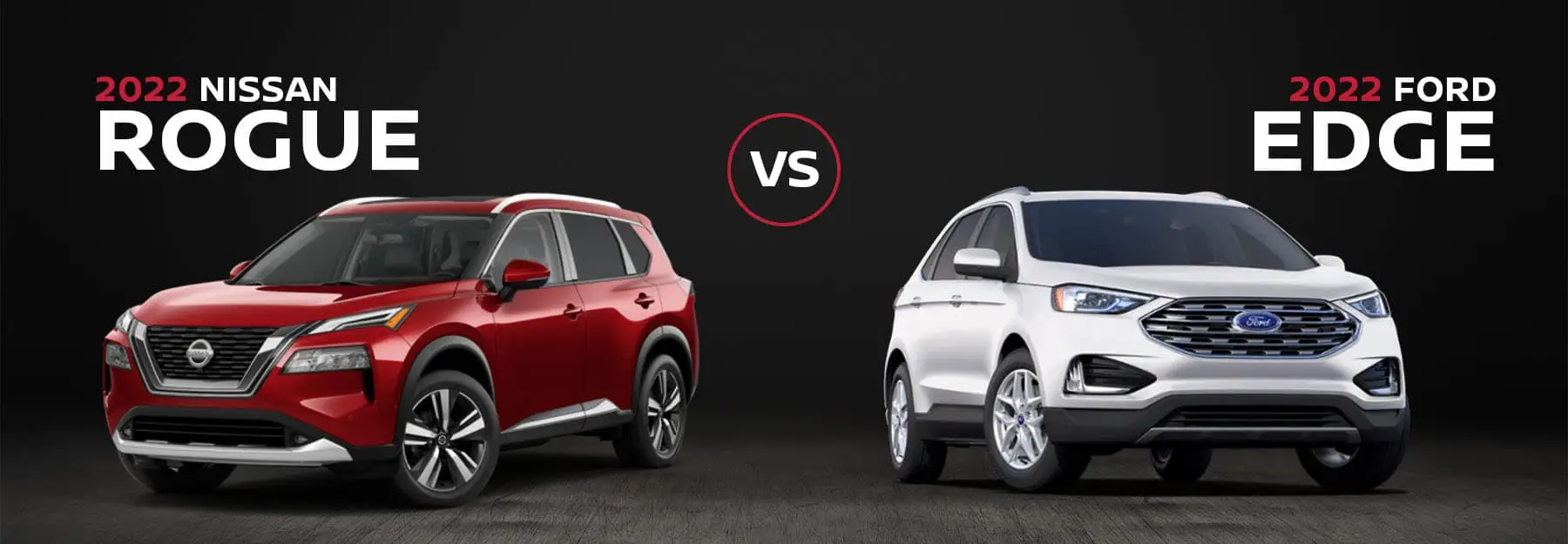
In the crowded arena of mid-size SUVs, the Nissan Rogue and Ford Edge stand out as popular choices, each offering a blend of practicality, comfort, and technology. However, a crucial factor differentiating these contenders is their size, which directly impacts interior space, cargo capacity, and overall maneuverability. For prospective buyers, understanding these dimensional nuances is paramount to making an informed decision that aligns with their specific needs and lifestyle.
This article delves into a detailed comparison of the Nissan Rogue and Ford Edge, focusing on their respective dimensions, interior volumes, and cargo capacities. We will analyze official specifications and expert reviews to provide a comprehensive overview, enabling readers to discern which SUV best suits their space requirements and driving preferences. This comparison will cover exterior dimensions, passenger space, and cargo volume behind both the first and second rows of seating.
Exterior Dimensions: A Tale of Two Sizes
The Ford Edge asserts its presence with a larger footprint compared to the Nissan Rogue. According to official manufacturer data, the Edge typically boasts a longer overall length, often exceeding the Rogue by several inches. This difference is noticeable when comparing their ability to navigate tight parking spaces and urban environments.
Width follows a similar pattern, with the Edge generally wider than the Rogue. This extra width contributes to a more substantial road presence but can also impact ease of maneuvering in narrow lanes or parking garages. Height differences are usually minimal, with both SUVs offering comparable ground clearance for tackling diverse terrains.
Interior Space: Passenger Comfort and Cargo Capacity
The increased exterior dimensions of the Ford Edge translate into a more spacious interior, particularly in terms of passenger volume. Front-seat occupants in the Edge often enjoy greater legroom and shoulder room compared to the Rogue. Rear-seat passengers in the Edge similarly benefit from added legroom, making it a more comfortable option for longer journeys.
The Nissan Rogue, while offering a comfortable cabin, generally provides slightly less legroom and headroom in both the front and rear seats. This difference is more pronounced for taller passengers, who may find the Edge a more accommodating choice. The Rogue, however, often leverages clever interior design to maximize available space.
Cargo capacity is another key differentiator between these two SUVs. The Ford Edge typically offers a significantly larger cargo area behind the second-row seats compared to the Nissan Rogue. This extra space is invaluable for families who frequently transport luggage, groceries, or sports equipment.
With the second-row seats folded down, the Edge continues to offer a greater cargo volume, providing ample space for larger items such as furniture or bicycles. While the Rogue's cargo area is smaller, it's often still sufficient for everyday needs and benefits from a lower load floor, making it easier to load and unload items.
Comparative Data: A Numerical Breakdown
To illustrate the size differences more concretely, consider the following comparative data based on typical specifications (note that exact measurements may vary slightly depending on the specific model year and trim level):
Ford Edge:
Overall Length: ~188-190 inches
Overall Width: ~75-76 inches
Cargo Volume (behind 2nd row): ~39-40 cubic feet
Cargo Volume (with 2nd row folded): ~73-74 cubic feet
Nissan Rogue:These figures highlight the Edge's advantage in overall length, width, and cargo capacity behind the second row.
Overall Length: ~183-184 inches
Overall Width: ~72-73 inches
Cargo Volume (behind 2nd row): ~36-37 cubic feet
Cargo Volume (with 2nd row folded): ~72-73 cubic feet
Maneuverability and Driving Dynamics
The smaller dimensions of the Nissan Rogue contribute to enhanced maneuverability, particularly in urban settings. The Rogue is generally easier to park and navigate through tight city streets compared to the larger Ford Edge. Its tighter turning radius further enhances its agility.
The Ford Edge, while larger, still offers competent handling and a comfortable ride. However, its increased size may require more attention and care when maneuvering in confined spaces. The Edge's heavier weight can also impact its acceleration and fuel economy, although newer models often incorporate fuel-efficient engine technologies.
Expert Opinions and Consumer Reports
Automotive experts often praise the Nissan Rogue for its user-friendly features, comfortable ride, and fuel efficiency. Its compact size makes it a practical choice for city dwellers and smaller families. Consumer Reports frequently highlights the Rogue's reliability and value proposition.
The Ford Edge, on the other hand, is lauded for its spacious interior, powerful engine options, and upscale features. Reviewers often commend its comfortable seating and ample cargo capacity, making it a suitable choice for families who prioritize space and versatility. Some reviews, however, mention its larger size as a potential drawback in urban environments.
Conclusion: Choosing the Right Fit
The decision between the Nissan Rogue and Ford Edge ultimately hinges on individual needs and priorities. If maneuverability, fuel efficiency, and ease of parking are paramount, the Rogue's smaller size and agile handling make it an attractive option. If passenger space, cargo capacity, and a more substantial road presence are more important, the Edge's larger dimensions and versatile interior offer a compelling advantage. Careful consideration of these factors will empower buyers to select the SUV that best aligns with their specific lifestyle and requirements.
Looking ahead, both Nissan and Ford are expected to continue refining their SUV offerings, potentially introducing new technologies and design elements that further differentiate these models. Future iterations may see adjustments in dimensions, interior layouts, and overall vehicle architecture, underscoring the importance of staying informed about the latest developments in this competitive segment.


